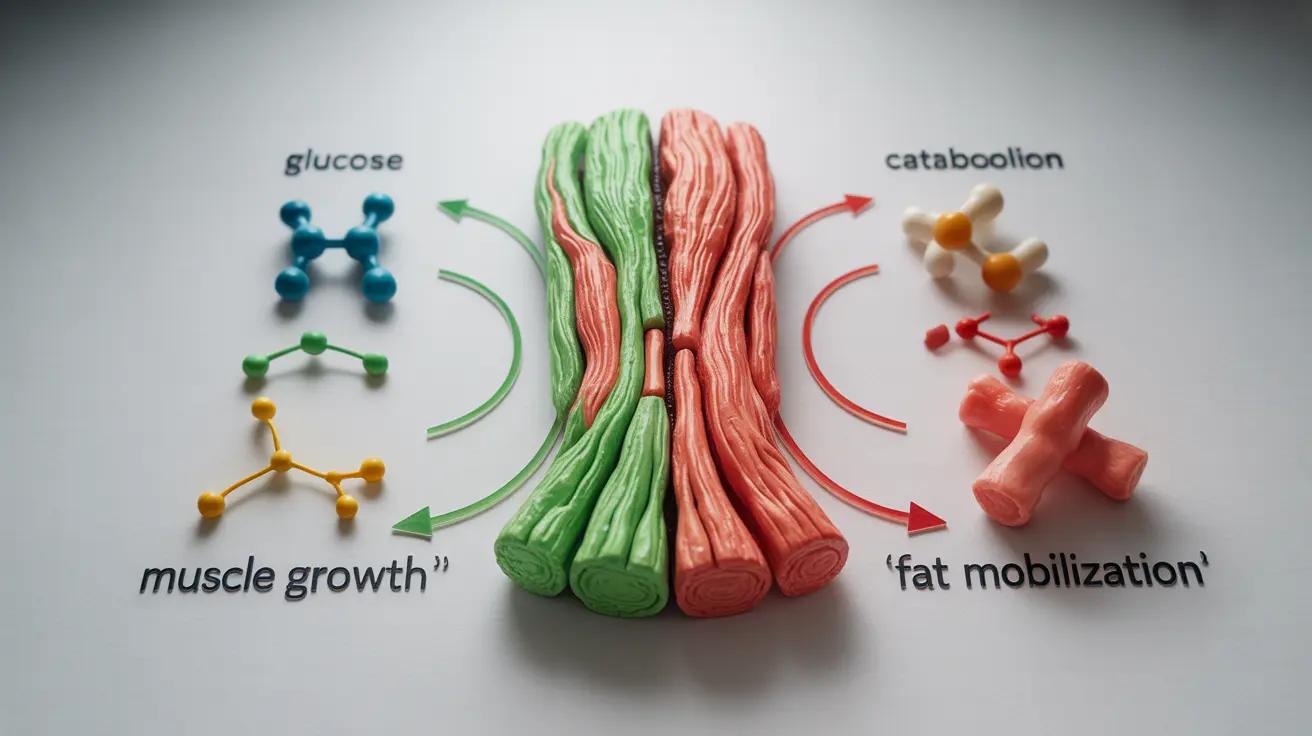Your body is constantly engaged in two fundamental metabolic processes: anabolism and catabolism. These opposing yet complementary processes work together to maintain health, build muscle, and regulate energy usage. Understanding the difference between anabolic and catabolic states can help you optimize your fitness goals and overall well-being.
In this comprehensive guide, we'll explore how these metabolic processes function, their roles in muscle growth and fat loss, and how you can effectively manage them through diet and exercise.
Understanding Anabolic and Catabolic Processes
Anabolism is the constructive phase of metabolism, where your body builds complex molecules from simpler ones. This process requires energy and is essential for muscle growth, tissue repair, and energy storage. During anabolic states, your body synthesizes proteins, builds bone tissue, and stores energy in the form of glycogen and fat.
Catabolism, conversely, breaks down complex molecules into simpler ones, releasing energy in the process. This energy fuels various bodily functions, including muscle contractions, cellular repair, and maintaining body temperature. Catabolic processes are crucial for providing the energy needed for daily activities and exercise.
The Role of Hormones in Metabolism
Several key hormones regulate anabolic and catabolic processes in your body. Anabolic hormones include:
- Testosterone
- Growth hormone
- Insulin
- IGF-1 (Insulin-like Growth Factor 1)
Catabolic hormones include:
- Cortisol
- Glucagon
- Adrenaline
- Norepinephrine
These hormones work in concert to maintain metabolic balance, responding to factors such as stress, exercise, nutrition, and sleep patterns.
Impact on Muscle Growth and Fat Loss
Muscle growth primarily occurs during anabolic states, when protein synthesis exceeds protein breakdown. This typically happens after resistance training and proper nutrition. The anabolic window is particularly important for muscle recovery and growth.
Fat loss, however, occurs during catabolic states when your body breaks down fat stores for energy. This process is enhanced during caloric deficits and certain types of exercise, particularly cardiovascular activities.
Optimizing Your Metabolic State
Exercise Timing and Type
Different forms of exercise trigger varying metabolic responses. Resistance training primarily stimulates anabolic processes, while endurance exercise tends to be more catabolic. The key is finding the right balance based on your fitness goals.
Nutrition Strategies
Your diet plays a crucial role in determining whether your body is in an anabolic or catabolic state. To support anabolism:
- Maintain adequate protein intake
- Eat regular meals
- Consume sufficient calories
- Include complex carbohydrates
- Time nutrients around workouts
Frequently Asked Questions
What is the main difference between anabolic and catabolic processes in the body?
Anabolic processes build complex molecules from simpler ones and require energy, while catabolic processes break down complex molecules into simpler ones and release energy. Anabolism is constructive (building up), while catabolism is destructive (breaking down).
How do anabolic and catabolic states affect muscle growth and fat loss?
Anabolic states promote muscle growth through increased protein synthesis and tissue building, while catabolic states facilitate fat loss by breaking down stored energy sources. Both states are necessary for overall fitness progress.
Which hormones regulate anabolic and catabolic activities, and how do they influence metabolism?
Anabolic hormones like testosterone and growth hormone promote tissue building, while catabolic hormones like cortisol and adrenaline facilitate breakdown processes. These hormones respond to various factors including stress, exercise, and nutrition to regulate metabolism.
How can I balance anabolic and catabolic processes to optimize muscle gain and fat loss?
Balance can be achieved through proper timing of exercise, nutrition, and recovery. This includes strategic meal timing, appropriate exercise selection, and adequate rest periods to allow for both muscle growth and fat loss.
Does exercise type and diet impact whether the body is in an anabolic or catabolic state?
Yes, resistance training typically promotes anabolic responses, while endurance exercise tends to be more catabolic. Diet also plays a crucial role - adequate protein and calorie intake supports anabolism, while caloric deficits promote catabolism.




